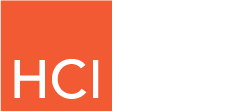RESOURCE HUB ARTICLE
How to Effectively Communicate Employee Benefits So Employees Actually Use Them: 3 Ways
Lin Grensing-Pophal, Contributing Editor at HR Daily Advisor
Apr. 10, 2025 | Employee Wellness
A well-designed benefits package doesn’t add value if employees don’t understand what benefits are available to them and how to access those benefits. One of the biggest reasons employees underutilize their benefits has nothing to do with cost or coverage. Instead, it has everything to do with communication.
Why Communication Matters More Than Design
Benefits are often complex. If they’re only discussed once a year during open enrollment, most employees won’t remember what’s available to them, much less how to access these benefits. Poor communication leads to missed opportunities, confusion, and reduced perceived value.
The benefits may be there, but they’re invisible. That doesn’t provide value to anyone.
Where Most Employers Fall Short
Lack of effective and comprehensive communication about benefits leads to lack of awareness, limited understanding, and low perceived relevance. When employees lack awareness of benefits, they obviously won’t choose to use them. But even when they’re aware, if materials are too technical and full of jargon, they may fail to fully comprehend the value, and benefits may still go unused. Finally, if they don’t see how a specific benefit applies to them, they’ll fail to take advantage of the benefit even if it might have been a great option. That means wasted investment and lower ROI for the employer.
3 Practical Strategies That Work
- Communicate year-round. Benefits shouldn’t be a once-a-year conversation. Keep the topic active with short, focused updates throughout the year—especially when there are new offerings or deadlines.
- Use plain language. Drop the jargon. Benefits information should be as clear as possible. If employees need a glossary to read your materials, they’re not going to read them.
- Mix your formats. Not everyone processes information the same way. Use multiple channels—email, short videos, intranet, printed materials, in-person meetings, and quick manager talking points.
The Role of Managers and HR Partners
HR can’t be the only one delivering benefits information. Managers have everyday influence and can reinforce key messages when employees need them most—during life events, performance conversations, or team check-ins. But they need support: talking points, FAQ sheets, and training on how to handle questions without giving wrong or incomplete answers.
Making It Stick
Peer stories, interactive tools, and timely nudges help make benefits more visible and relatable. The more personalized and relevant the message feels, the more likely employees are to engage with it.
Good benefits don’t speak for themselves. Employers need to make them seen, heard, and understood—consistently.
Lin Grensing-Pophal is a Contributing Editor at HR Daily Advisor.
Continue Your Employee Wellness Learning
Beyond Employee
Engagement Workshop
Make your employee experience a competitive advantage in this half-day virtual HR workshop.
Coaching for Engagement &
Performance Certification
Unlock the power of coaching to transform your workplace culture and drive success
Resources
Get In Touch

Contact 1-866-538-1909



